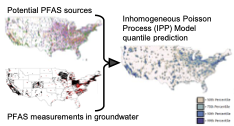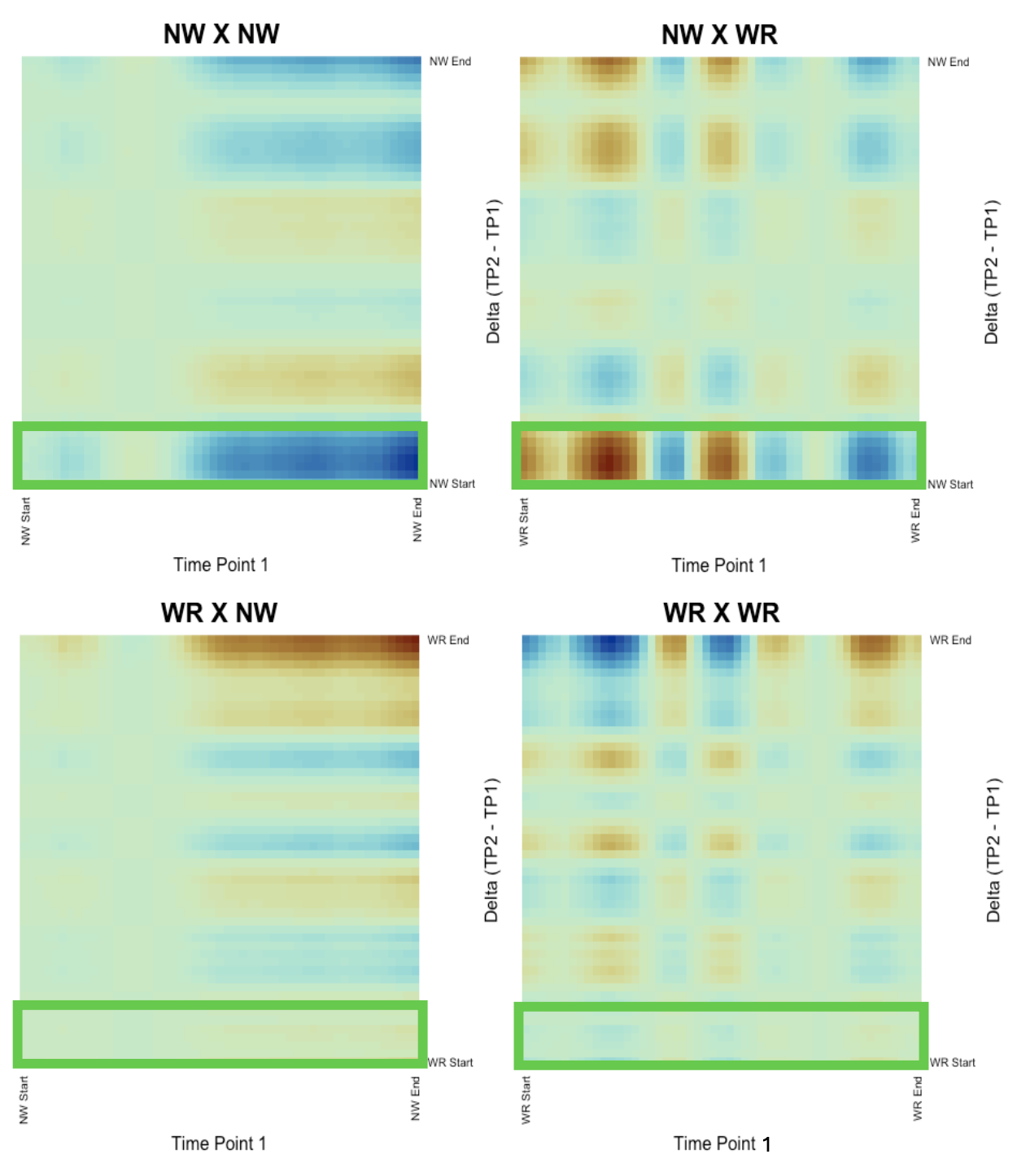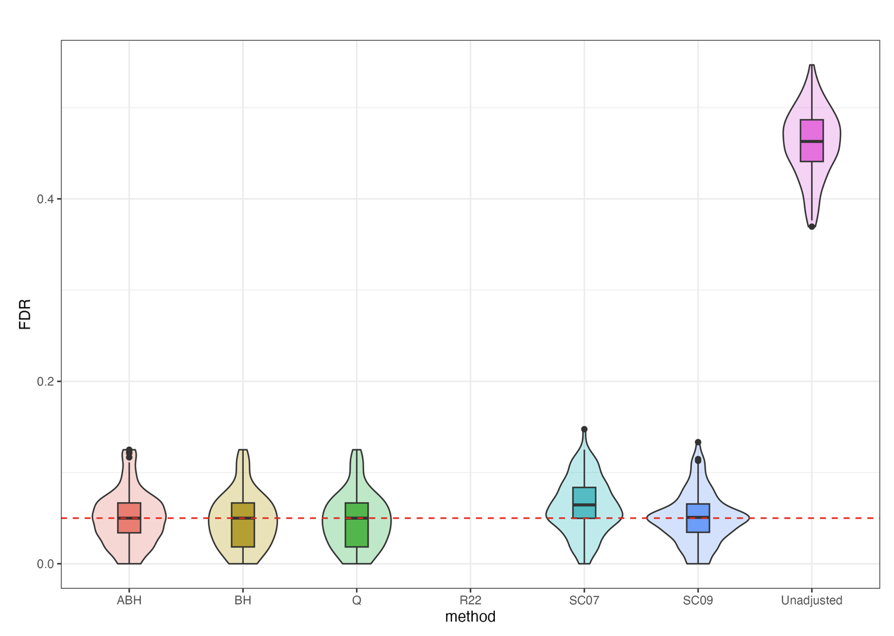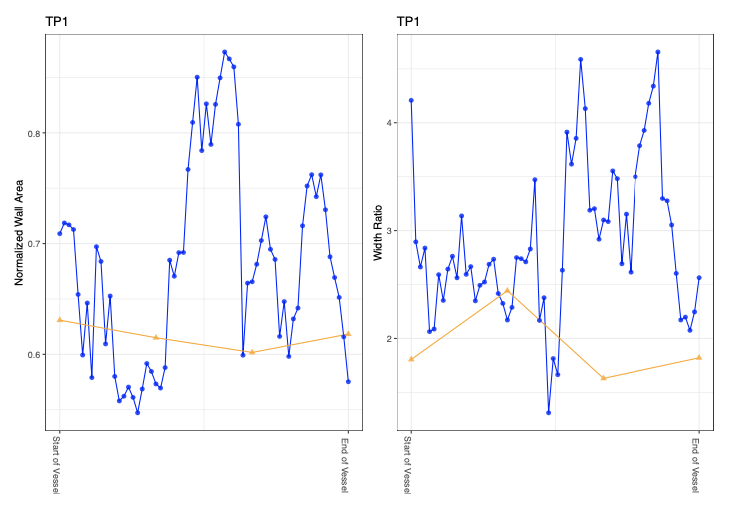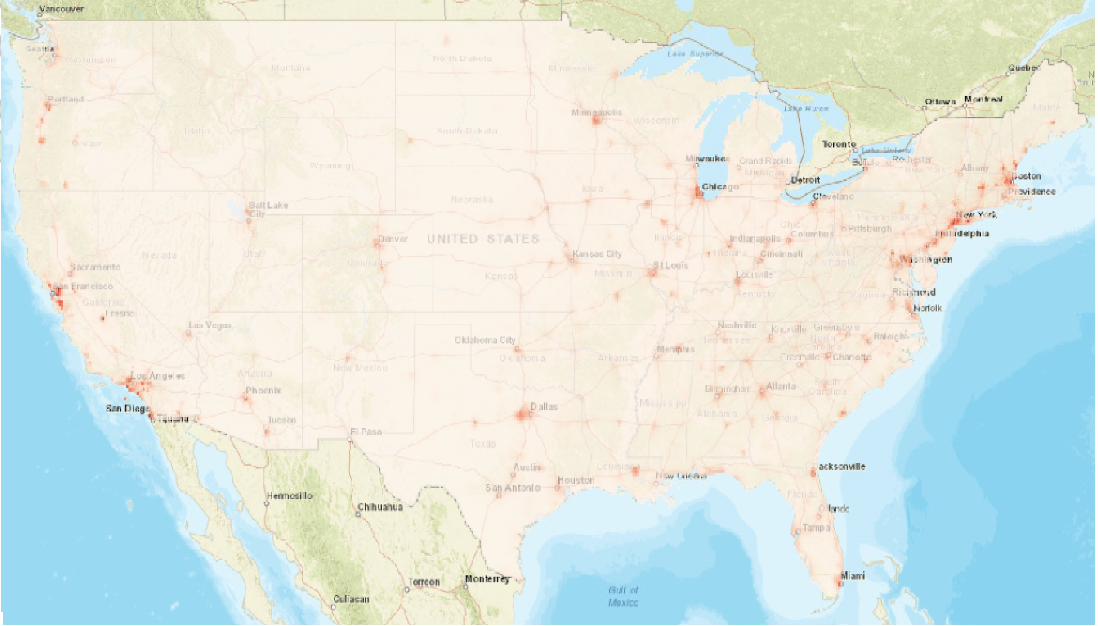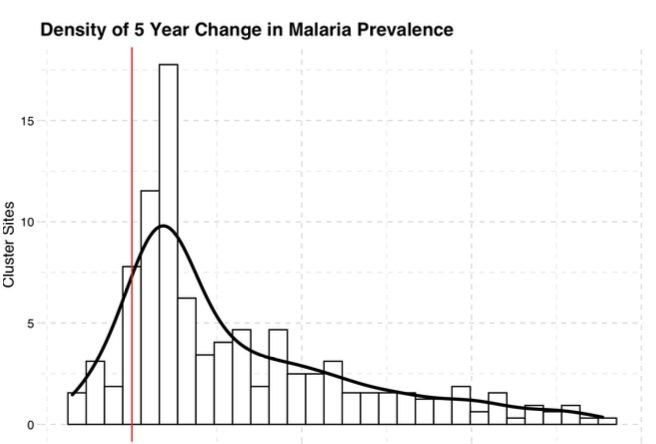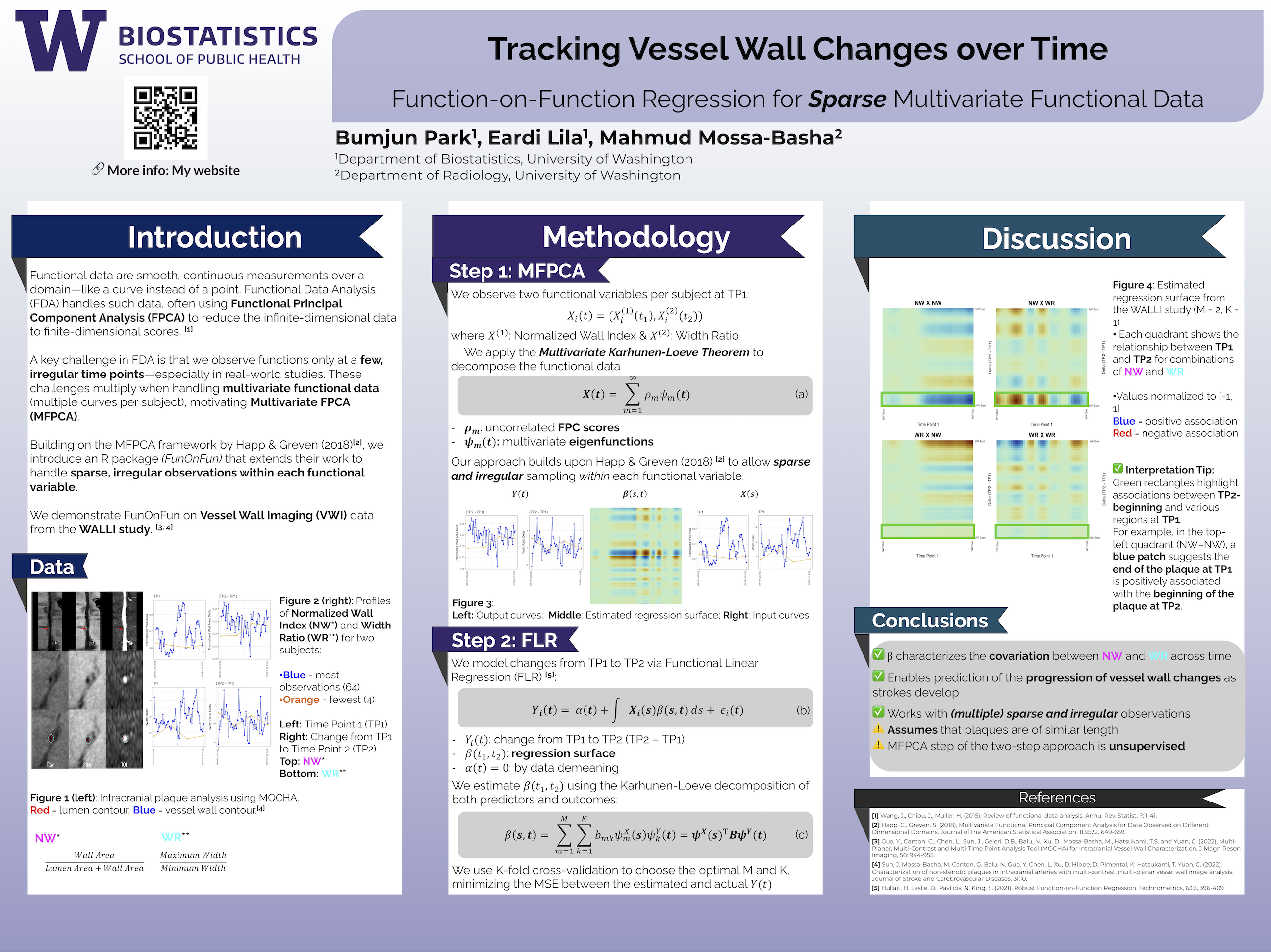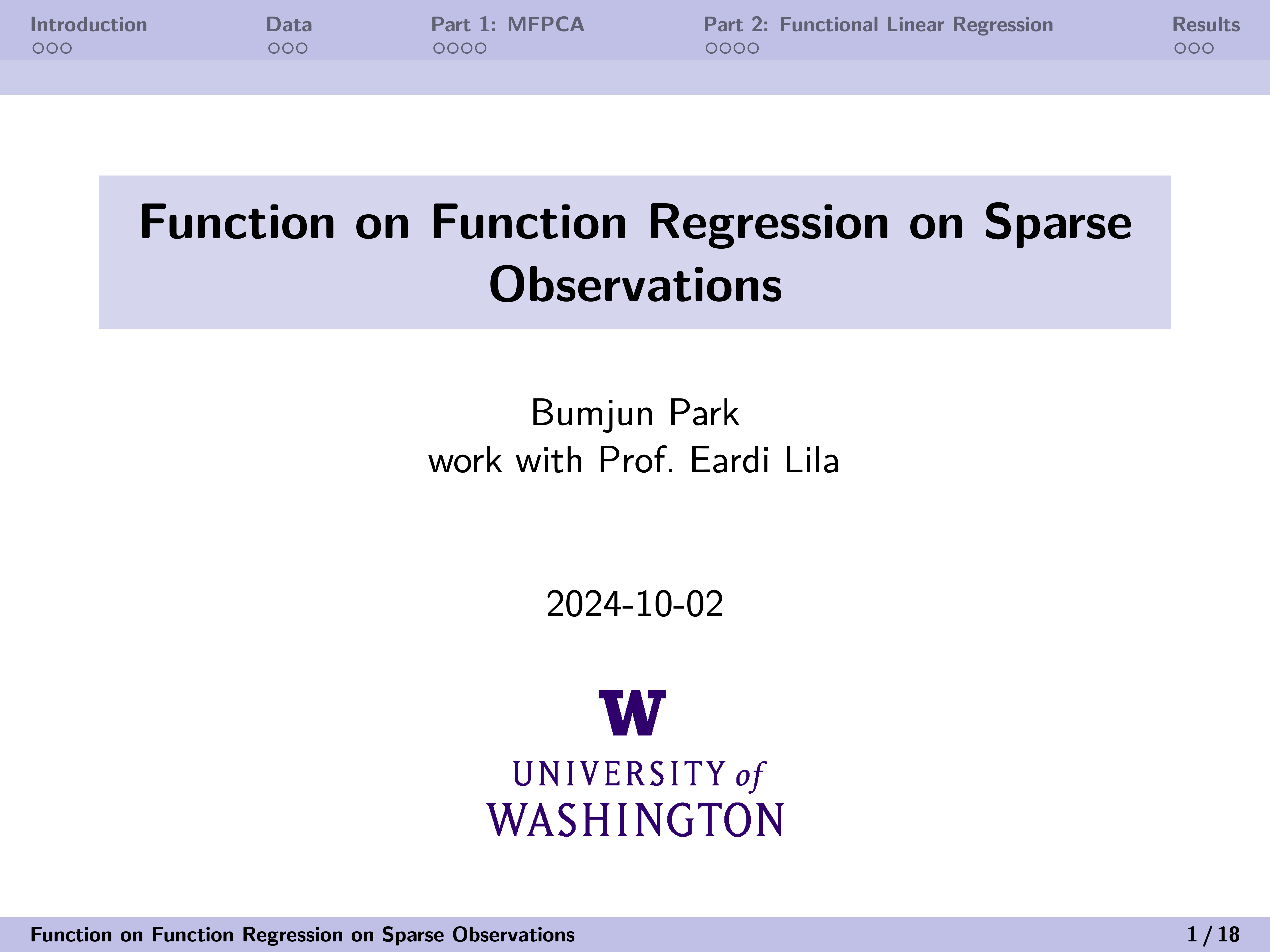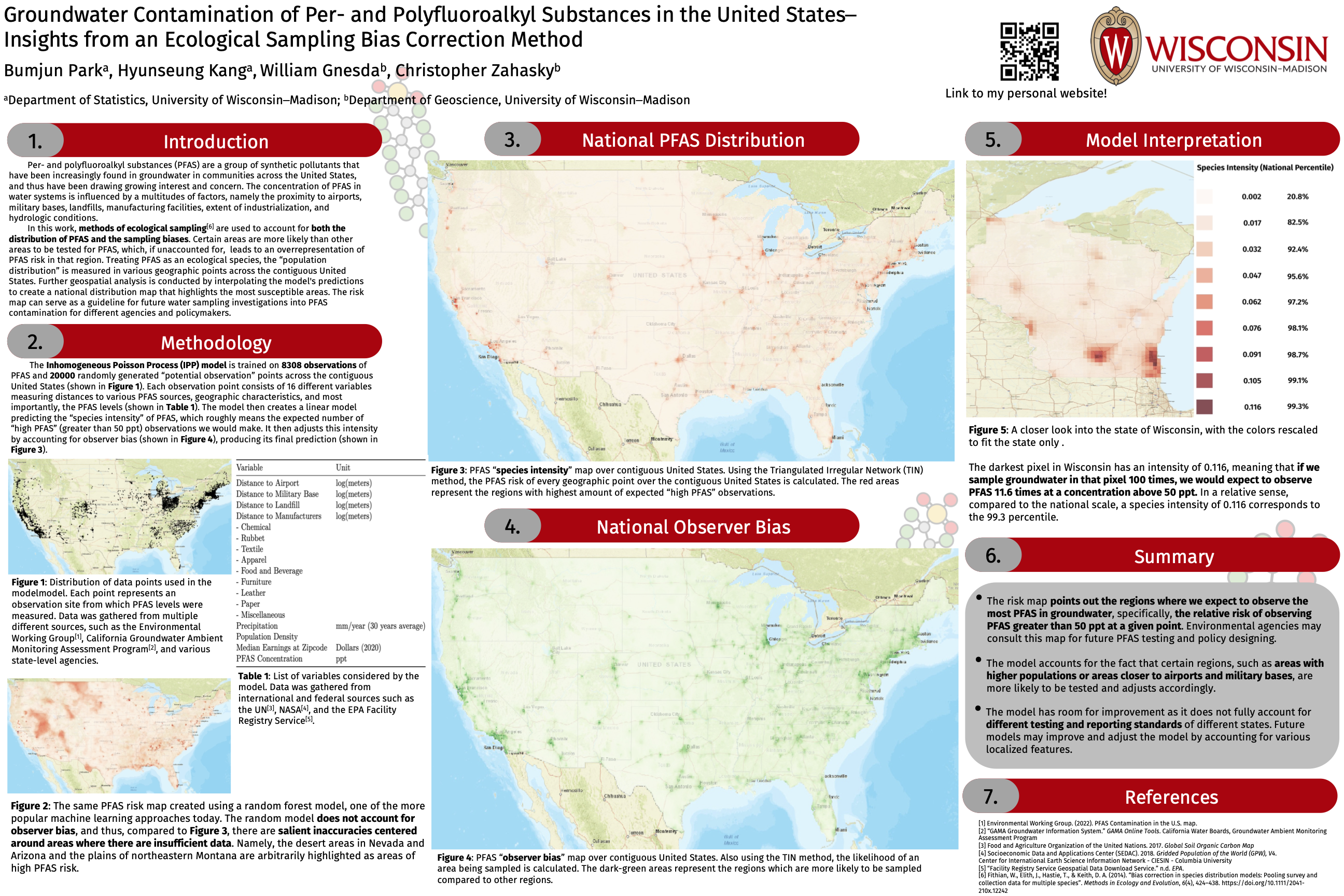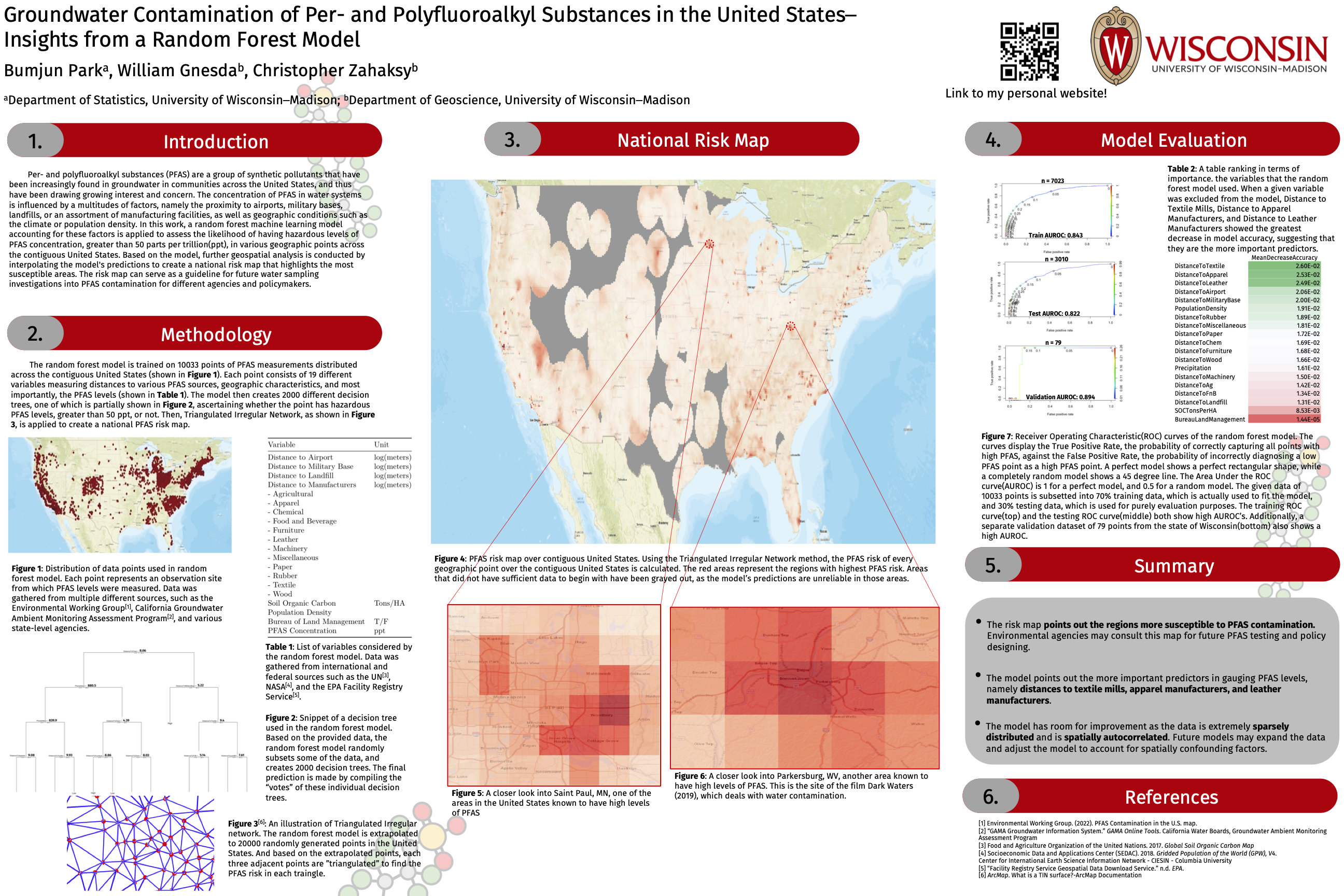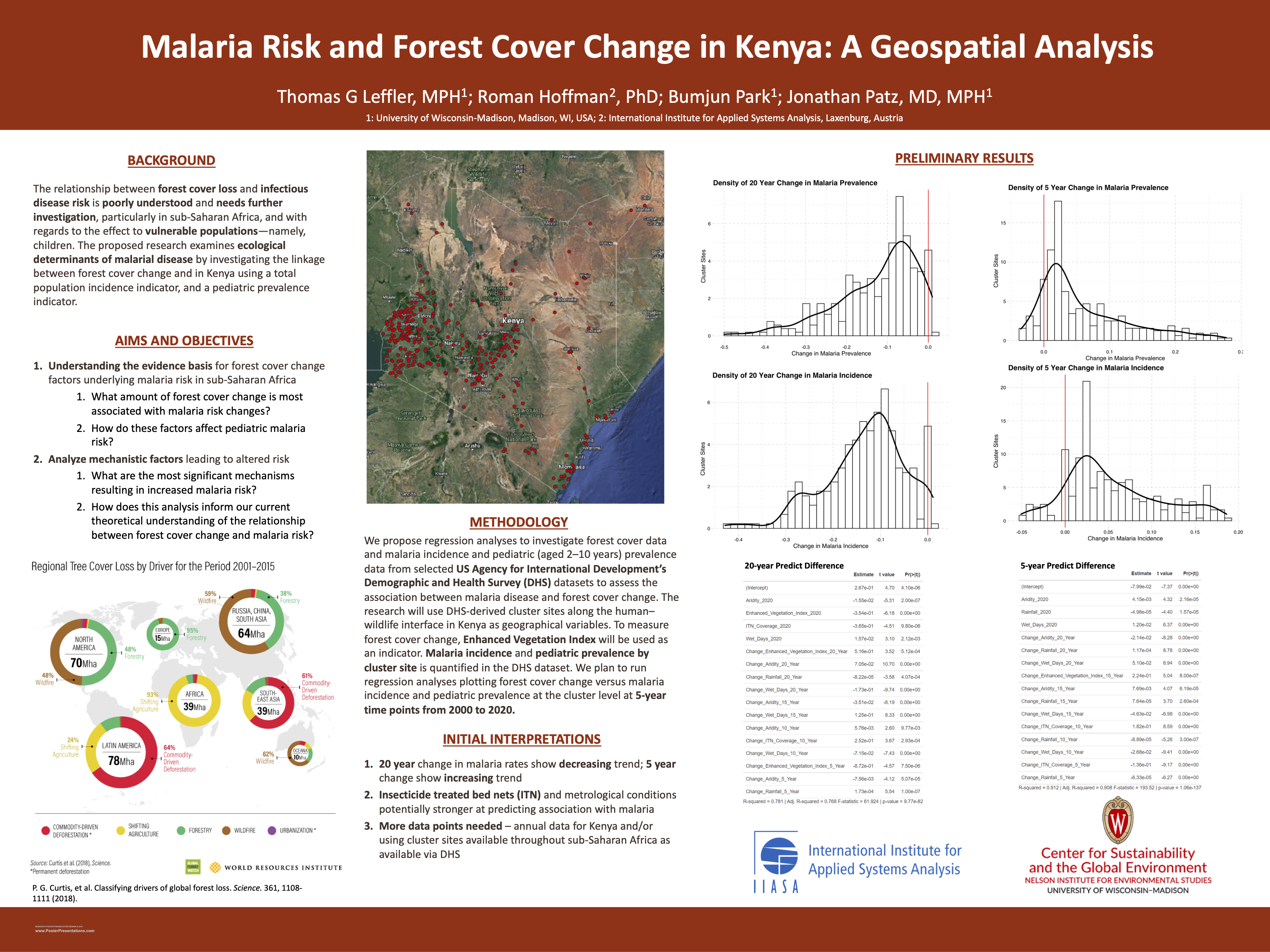About Me

Bumjun Park
Ph.D. Student
Hi! My name is Bumjun Park. I am from Seongnam, South Korea, and grew up between Seongnam and Madison, Wisconsin. I am currently a doctoral student in Biostatistics at the University of Washington. I am a proud Wisconsin Badger, holding a degree in Statistics and certificates in Mathematics and Economic Analytics. I am a native speaker of English and Korean.
My academic interests include spatial and environmental statistics, functional data analysis, and network and graphical modeling. I work with Professor Jing Ma at the Fred Hutchinson Cancer Center on studying data-driven methods of detecting communities and networks within microbiota, along with robust approaches to statistical inference.
I also do research with Professor Eardi Lila on advancing functional data analysis methods in analyzing neuroimaging and neurological biomarker data, with the goal of improving our understanding of disorders such as stroke and Alzheimer’s disease. And with Professor Jon Wakefield, I am investigating Bayesian methods of modeling mortality data in the presence of missingness.
-

March 2015- February 2018
Hankuk Academy of Foreign Studies
International Department
-

September 2018 - May 2023
University of Wisconsin-Madison
BS in Statistics
Certificate in Mathematics, Economic Analytics -

September 2023 -
University of Washington
Ph.D. Student in Biostatistics
